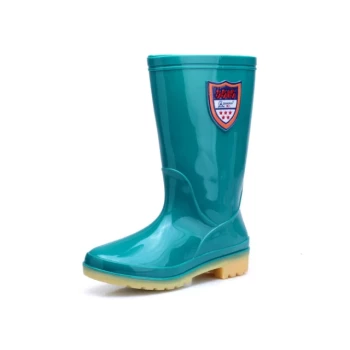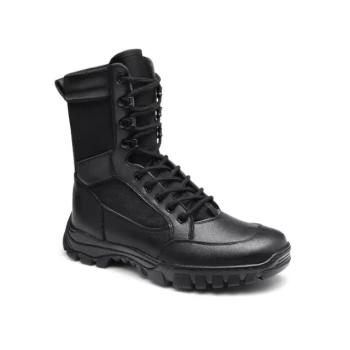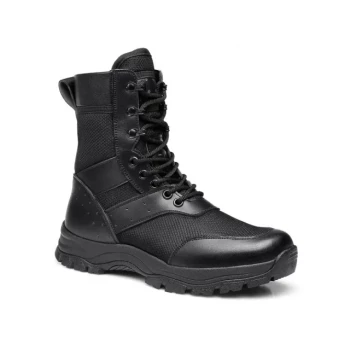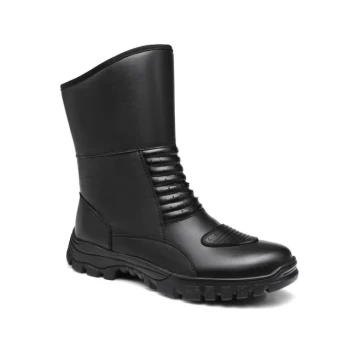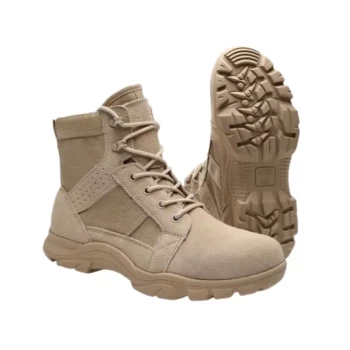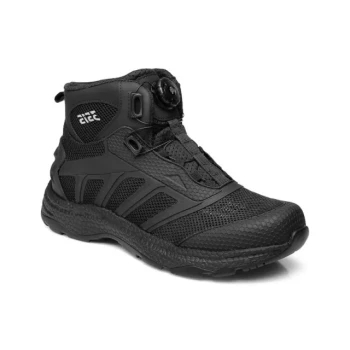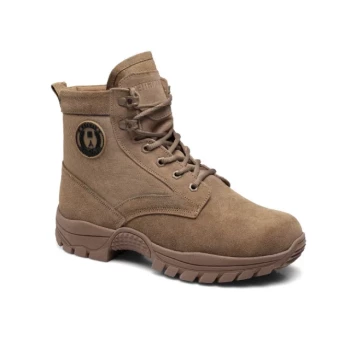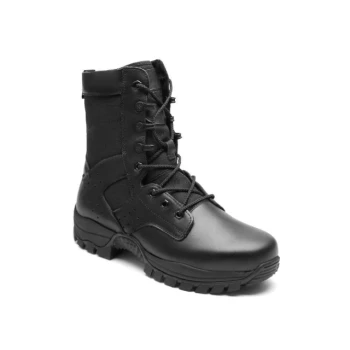In short, high-cut hiking shoes excel in ankle support, stability, and durability, making them ideal for carrying heavy packs on rugged terrain. Their primary disadvantages are increased weight, reduced flexibility, and lower breathability compared to low-cut models. This trade-off between robust protection and lightweight agility is the central factor in choosing the right footwear.
The decision between high-cut and low-cut hiking footwear is not about finding the "best" shoe, but about selecting the right tool for the job. The core choice you are making is between maximum support and protection versus minimal weight and flexibility.
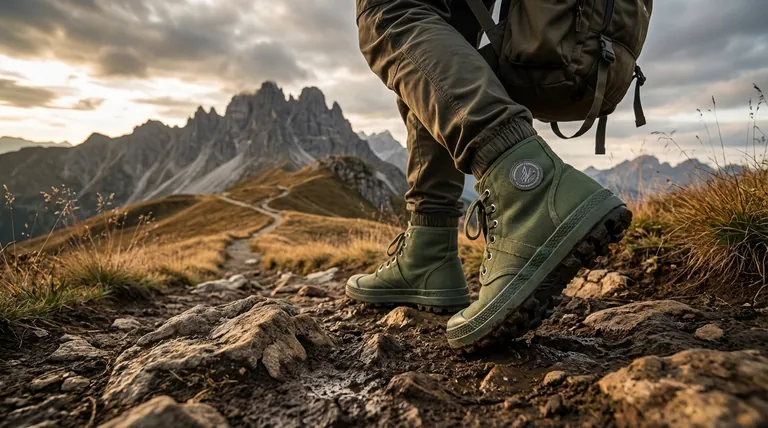
The Case for Support: Key Advantages of High-Cut Hiking Shoes
High-cut hiking shoes, often called hiking boots, are purpose-built for demanding conditions. Their design prioritizes the structural integrity needed to protect your feet and ankles over long, challenging distances.
Superior Ankle Support and Stability
The defining feature of a high-cut shoe is the cuff that extends above the ankle. This provides significant physical support, helping to prevent twists and sprains on uneven, rocky, or unpredictable trails.
This rigidity, combined with a stiff midsole, creates a stable platform for your foot, reducing the small, fatiguing movements that occur with every step on rough ground.
Built for Heavy Loads
When you carry a heavy backpack, your center of gravity shifts, and the load on your feet and ankles increases dramatically. The robust structure of a high-cut boot helps manage this extra weight.
The firm support prevents your foot from over-flexing under load, which significantly reduces foot fatigue and the risk of injury on multi-day treks.
Enhanced Durability and Protection
High-cut boots are generally constructed with more durable materials, from the sole to the upper. They are designed to withstand abrasion from rocks, roots, and scree.
Most models also offer a degree of water resistance or a full waterproof membrane, providing essential protection from difficult weather conditions and stream crossings.
Understanding the Trade-offs: The Downsides of High-Cut Designs
The very features that make high-cut boots protective also introduce a series of compromises. Understanding these trade-offs is critical to avoid choosing a shoe that is overkill for your needs.
The Cost of Weight
Support and durability come from more material, which means more weight. Heavier footwear requires more energy to lift with every single step, which can compound into significant fatigue over a long day of hiking.
Reduced Flexibility and Agility
The same stiffness that provides stability can also feel restrictive. A rigid boot limits the natural range of motion in your foot and ankle, making you feel less agile and connected to the trail, especially on smoother paths.
The Breathability Factor
More material and the inclusion of waterproof membranes inherently reduce airflow. This can lead to hotter, sweatier feet, particularly in warm or dry climates, which can increase the risk of blisters.
The Break-in Period
Unlike flexible, low-cut shoes that feel comfortable out of the box, stiffer high-cut boots often require a break-in period. You need to wear them for shorter durations to allow the materials to soften and conform to the shape of your foot.
Making the Right Choice for Your Hike
Your decision should be based on a clear assessment of your typical hiking style, the terrain you frequent, and the weight you plan to carry.
- If your primary focus is trekking with a heavy pack or on rugged, unstable terrain: A high-cut hiking boot is your most reliable choice for its unparalleled support and protection.
- If your primary focus is day hiking on well-maintained trails with a light pack: A low-cut hiking shoe offers superior comfort, flexibility, and breathability for these conditions.
- If your primary focus is a mix of conditions and you value ankle support but dislike heavy boots: Consider a mid-cut boot, which offers a balance of support and reduced weight.
Ultimately, the best hiking footwear is the one that correctly matches the demands of your trail and the needs of your body.
Summary Table:
| Feature | High-Cut Hiking Boots | Low-Cut Hiking Shoes |
|---|---|---|
| Best For | Heavy packs, rugged terrain | Light loads, well-maintained trails |
| Ankle Support | Excellent | Minimal |
| Weight & Flexibility | Heavier, less flexible | Lighter, more agile |
| Durability & Protection | High | Moderate |
| Breathability | Lower | Higher |
Need the Perfect Hiking Boot for Your Brand or Store?
As a large-scale manufacturer, 3515 produces a comprehensive range of durable, high-performance hiking footwear for distributors, brand owners, and bulk clients. Our production capabilities encompass all types of hiking boots and shoes, ensuring you get the right product for your market.
Let us help you equip your customers for the trail. Contact our team today to discuss your footwear needs!
Visual Guide
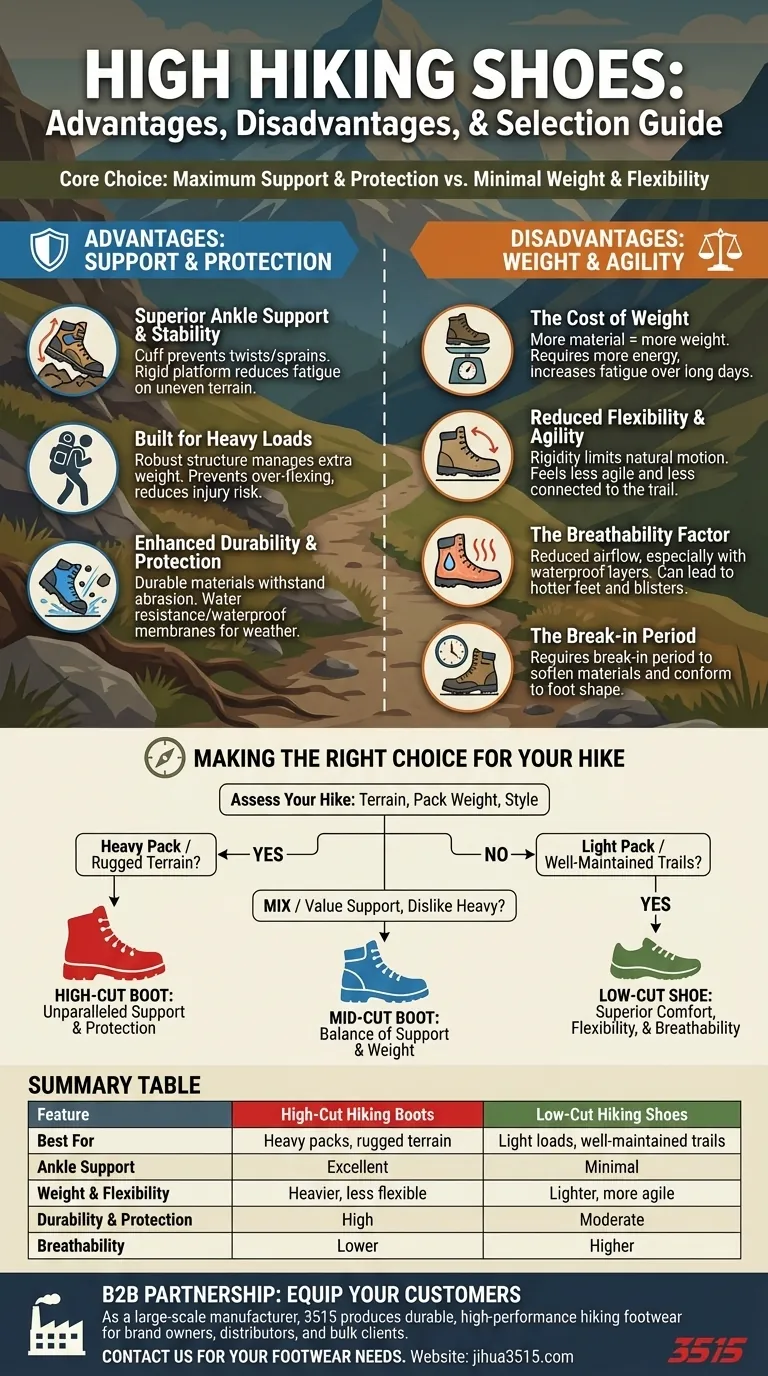
Related Products
- Factory-Direct Wholesale Canvas Boots with High-Traction Rubber Soles
- High Performance Fire-Retardant Waterproof Safety Boots
- Premium Wholesale Waterproof Safety Boots High Performance Protection for Industrial Markets
- Customizable Anti-Smash Safety Boots for Wholesale & Private Label Manufacturing
- Premium Flame-Retardant Waterproof Safety Boots and Shoes
People Also Ask
- What should be avoided when storing boots with outsoles? Protect Your Investment from Dry Rot & Decay
- Why are rubber soles beneficial in cold-weather boots? Superior Traction & Waterproofing
- What factors determine the slip resistance of rubber-soled shoes? Tread, Compound & Design Explained
- What types of rubber are typically employed in non-slip footwear soles? Your Guide to Maximum Grip and Safety
- What is a vulcanized sole? Discover the Secret to Superior Flexibility and Grip









